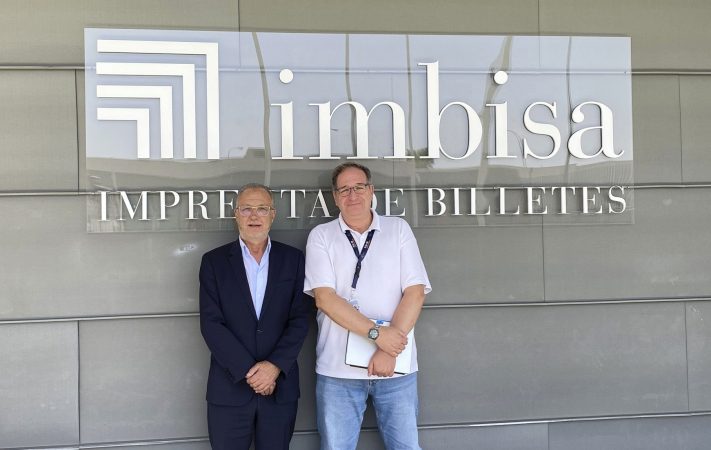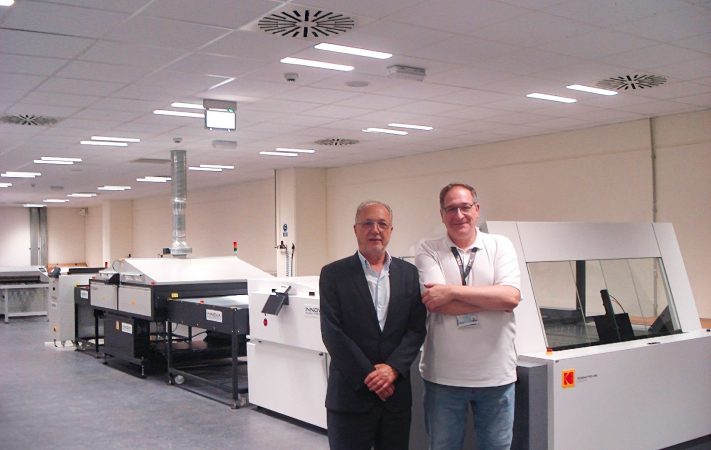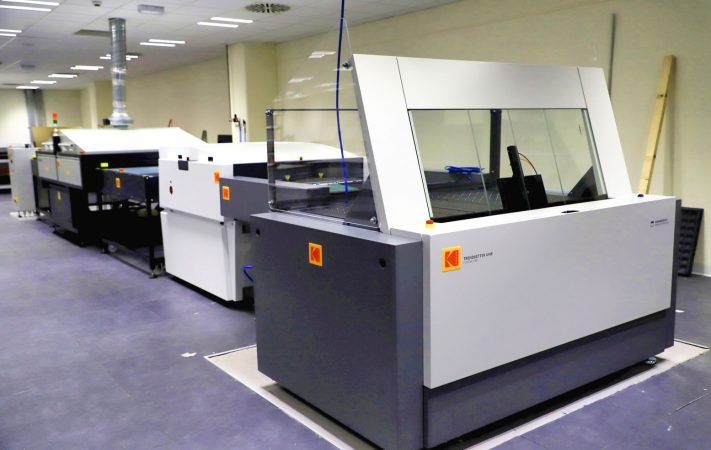Madrid, Spain
IMBISA
Ultra-high-resolution CTP and plates from Kodak help the Spanish high-security printer to fulfill its tasks reliably
Company
Founded in 2015 as a subsidiary of the Bank of Spain, Imprenta de Billetes S.A. (IMBISA) specializes in the production of euro banknotes. Located in Madrid's Vicálvaro district, it is the first banknote printing plant built from scratch in Europe in the last 60 years.
Challenge
Promote process automation, ergonomic working methods, smooth material flow, and sustainability through the implementation of advanced technologies
Kodak Solution
TRENDSETTER Q400 UHR Platesetter
ELECTRA XD Thermal Plates
Introduction
Printing banknotes is a highly specialized business that revolves around quality and counterfeit protection, as well as the reliability and security of the production process. In Spain, this task is performed by Imprenta de Billetes S.A. (IMBISA), one of 11 high-security printing plants in Europe that produce euro banknotes. IMBISA was founded in November 2015 as a subsidiary of the Bank of Spain, which owns 80% of the company's shares; the remaining 20% belongs to the National Mint and Stamp Factory.
Since the end of 2022, IMBISA has been located in a complex of buildings in the Vicálvaro district of Madrid, on a site of almost 66,000 square meters. Production at IMBISA is fundamentally different from the processes in a typical commercial printing shop.
The Business Need
The production of euro banknotes, which are printed on cotton fiber paper, involves several printing processes:
- Offset lithography, which is used to print the entire background of the banknotes
- Screen printing for printing the banknote's value
- Intaglio printing, where the banknotes are printed using heat and temperature, giving them a special relief
- Finally, the individual numbering for each banknote is printed, and low-denomination banknotes are varnished.
This printing process diversity allows for a wide variety of security features, but it also introduces various requirements for prepress and platemaking.
The Kodak Solution
According to the Director of Quality, Laboratory, and Prepress, IMBISA has implemented "a disruptive approach in prepress that differs from the usual procedures at banknote printing plants and is geared toward streamlining processes and maximizing efficiency." IMBISA installed a KODAK TRENDSETTER Q400 UHR Platesetter with an Autoloader for wet offset plates. The plates are processed on an automatic plate line that also includes a baking oven.
The decisive factors in choosing Kodak's CTP solution were the renowned stability, exceptional precision, and quality of KODAK SQUARESPOT Imaging Technology, as well as the ultra-high resolution of the TRENDSETTER Q400 UHR Platesetter. It offers a resolution of more than five times the resolution of a typical CTP device for commercial printing applications. This resolution is required to print anti-counterfeiting features such as extremely fine lines and microtext on the banknotes in razor-sharp detail.
IMBISA uses KODAK ELECTRA XD Thermal Plates for offset printing. These plates provide the high resolution essential for banknote production, along with excellent print run stability. Additionally, these plates can have their lifespan extended through baking.
The Outcome
"The introduction of this state-of-the-art technology reflects a fundamental paradigm shift in prepress. While the prepress departments of other banknote printing companies still involve a great deal of manual work and, in some cases, still use film, our processes are largely automated, requiring significantly fewer staff. Our TRENDSETTER Q400 UHR Platesetter with Autoloader and downstream plate processing line plays an essential role in streamlining our prepress operations," says the prepress manager.
Overall, IMBISA is now well prepared for new future requirements in the demanding world of banknote production.
Contact Us
Contact a Kodak representative to learn how our products and solutions can help grow your business.





